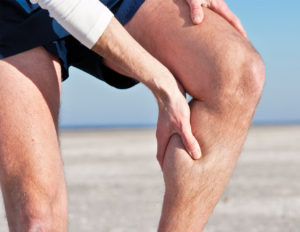 Individuals with peripheral arterial disease (PAD) have blood flow disruptions usually in the feet and legs, but it can also occur else where in the body. In fact, people with PAD are at very high risk of suffering stroke and heart attack. When the blood vessels are narrowed or clogged, the blood flow becomes obstructed and other complications can ensue. If this process occurs in the heart, you can suffer a heart attack. If this goes on in the brain, you can suffer a stroke. In fact, people afflicted with this process typically suffer from involvement of various organs (heart, kidney, brain, legs, etc). Currently, 8.5 million Americans are suffering from peripheral artery disease, many completely unaware of the reason for their symptoms.
Individuals with peripheral arterial disease (PAD) have blood flow disruptions usually in the feet and legs, but it can also occur else where in the body. In fact, people with PAD are at very high risk of suffering stroke and heart attack. When the blood vessels are narrowed or clogged, the blood flow becomes obstructed and other complications can ensue. If this process occurs in the heart, you can suffer a heart attack. If this goes on in the brain, you can suffer a stroke. In fact, people afflicted with this process typically suffer from involvement of various organs (heart, kidney, brain, legs, etc). Currently, 8.5 million Americans are suffering from peripheral artery disease, many completely unaware of the reason for their symptoms.
Because PAD typically causes pain in the legs, it can be mis-interpreted as arthritis, back or spinal pain, or any number of other problems. The first step in formulating an effective treatment strategy is identifying the underlying problem accurately.
Maintaining a healthy diet is critical to keeping your lipid levels in proper balance, thereby helping to keep your arteries clean and free from blockage. I recommend a diet rich in healthy fruits, vegetables, lean protein and healthy fats (mono- and poly-unsaturated fats). Avoiding or minimizing simple carbohydrates like white bread, white rice, highly refined flour products, and sugars is also very important. Preventing atherosclerosis can be achieved through medications as well. However, if the blockage from PAD is severe and lifestyle limiting, a medical procedure may be necessary to open and repair the artery to allow blood to flow normally again.
Symptoms of PAD
• Claudication (leg and calf pain while walking)
• Weak pulse in ankle or foot
• Hair loss on legs and feet
• A sensation of tightness & burning in the leg or foot
• Dry, itchy skin
• Slow to heal wounds or ulcers of the feet
• Discolored and irregular toe nails
Although arterial insufficiency can happen to anyone, some of the common factors that put you at risk are family history, smoking, diabetes, high blood pressure, high cholesterol, being overweight, poor diet, and a sedentary lifestyle.
Treatment Options for PAD
• Peripheral Vascular Stent
• Angioplasty
• Bypass Grafting
• Worst case may require Amputation if nothing is done early on!
Because this disease process can be very treatable when caught early, but options grow more limited as the disease progresses, it is critical to seek medical attention when an individual begins to experience symptoms. Again, if PAD is recognized early on it can be treated effectively to prevent further damage to your circulatory system, vital organs, and your overall health. If you or someone you know is experiencing any vascular issues or may have questions about this important issue, please contact your physician immediately. If you don’t know who to reach out to, please call us so that we can assist with this process, as it can sometimes be rather overwhelming to know who best to contact.
Hopkins Cardiovascular Associates
941-355-5336
Hopkinscardiovascular.com








